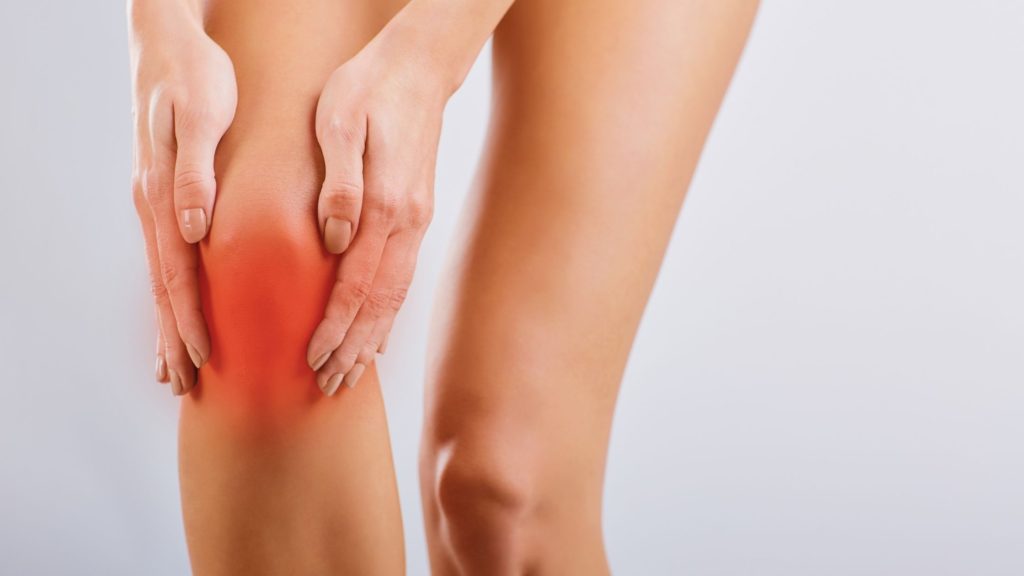
- Bursitis is a condition that occurs when the bursae, which are tiny fluid-filled sacs located around the joints, become inflamed.- Bursitis in the knee can cause pain, swelling, and difficulty moving the joint.
- Several exercises can help manage the symptoms of bursitis in the knee and, in some cases, prevent it from recurring.
- These exercises may include stretching, strengthening, and low-impact activities that help improve flexibility and range of motion.
Bursitis knee could be one of the reasons for pain and swelling around your knee. It is the fluid-filled sac (bursa) swelling around the knee joint. If pain is not that severe, it can be managed conservatively by bursitis knee treatment exercises & physiotherapy.
There are four spots around the knee where bursitis can occur. What are they, and what are their causes, symptoms, and treatment? This article will answer all these questions.
What is knee bursitis?
Swelling of the bursa is termed bursitis, and if bursitis happens around the knee joint, it is called bursitis knee. You might be wondering what this bursa is.
The bursa is a fluid-filled membranous sac that is present around the joint (not in the joint) and between two structures. It is present either between two tendons or between tendons and joint.
This fluid-filled sac has a critical role in reducing the friction between these two structures, which move during the movement of the joint. Imagine a painful condition where two tendons are rubbing together inside our joint.
They present around every major joint. However, the common sites of bursitis are shoulder bursitis, elbow, hip, and knee bursitis.
Bursa around the knee joint
Around the knee joint, there are four bursae. They are suprapatellar, prepatellar, infrapatellar, and pes anserine bursa.
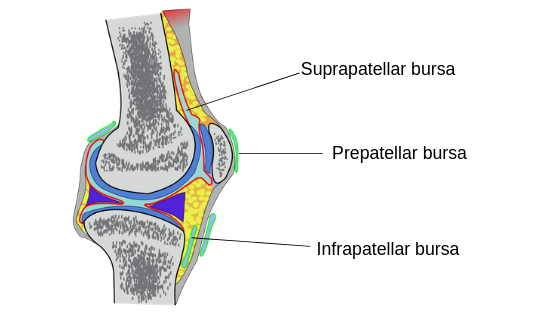
Depending on the site of the bursa, there can be four types:
- Suprapatellar bursitis: Present just above the patella.
- Pre-patellar bursitis: Situated just over the patella.
- Infrapatellar bursitis: As the name suggests, it is inferior to the patella.
- Pes Anserine bursitis: Present on the medial side of the knee.
The first line of treatment is conservative treatment. If conservative methods fail, surgical excision of the bursitis is the only option left. If the cause of bursitis is an infection, penicillin injection or antibiotics are given.
The following physiotherapy treatment comes under conservative management.
- Icing: Icing is suggested during the acute phase when there is severe pain. It helps reduce swelling and, thereby, reduces pain.
- Compression bandage: Compression of bursitis using knee caps or crepe bandages is beneficial in reducing swelling.
- Ultrasonic therapy: It is electrotherapy, where a therapeutic ultrasonic ray is used to treat the painful part. Its deep micro-massage effect and tissue thermal effectiveness are effective in pain and swelling.
- Exercises: Both stretching and strengthening exercises reduce swelling and bring mobility to the joint.
What causes knee bursitis?
The direct impact or injury over the bursa is the most crucial cause of bursitis. Infection can be among the other causes. A study showed it is more common among male workers exposed to heavy workloads and frequent kneeling1. There are several other factors leading to knee bursitis.
- It could be a direct assault on the bursa.
- Direct fall over the knee bursa. This is commonly seen in athletes and sports personalities.
- Repeated slow occupational impact over a long period. For example, suprapatellar bursitis is commonly seen in the profession as requiring kneeling. Common in housemaids, and this is why it is called “housemaids knee”.
Signs and Symptoms of knee bursitis
Pain at the spot of bursitis is the most important symptom. The other signs and symptoms include:
- Swelling and redness around bursitis.
- Pain
- Stiffness at the nearest joint.
- The slightest impact over bursitis will illicit unbearable pain.
5 Best exercises for knee bursitis
#1 Patellar tendon, quadriceps tendon stretching
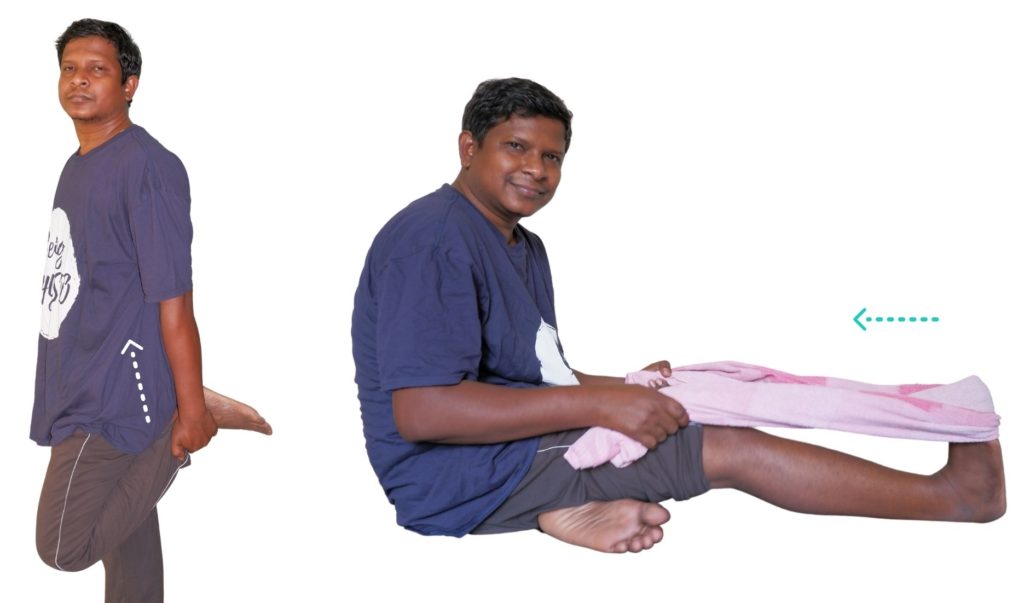
The patellar tendon is located just below the patella and connects to the tibia bone. The quadriceps tendon is found at the upper end of the patella and connects it to the quadriceps. These tendons can become stiff due to inactivity and result in pain. Stretching exercises can help alleviate this pain. The stretching exercise is simple and can be done in a standing position.
- First, stand straight and bend the knee, which needs stretching.
- As shown in the figure above, hold the foot from behind and pull it towards the buttock.
- Stretch until you feel comfortable.
- Hold this position for at least 30 seconds and then release.
- Repeat the process two to three times in a single session.
#2 Posterior knee capsule stretching
As a result of pain and swelling, stiffness can develop around the knee joint. The posterior knee capsule is the most common structure that becomes stiff, so it needs to be stretched. To stretch the posterior knee capsule:
- Start by sitting with your legs straight out in front of you. For this stretching exercise, you will need a bed sheet or towel.
- Hold both ends of the sheet or towel with both hands and place it over the ball of your foot.
- Now, pull the sheet or towel towards you to bend your ankle until you feel a nice stretch on the back of your knee. Make sure to keep your knee straight while pulling.
- Hold this position for at least one minute, then relax.
- Repeat this process 2-3 times for the affected leg in a session.
#3 Knee press exercise
A simple sitting exercise can strengthen the quadriceps muscles located at the front of our thigh.
- First, sit with your legs stretched before you and place a pillow or towel roll under your knee.
- Then, press down on the pillow or towel roll and hold for 5 seconds before releasing.
- Repeat this process at least 20 to 30 times in a single session.
- This exercise can help improve your muscle strength over time.
#4 Straight leg raises in supine exercises for prepatellar bursitis
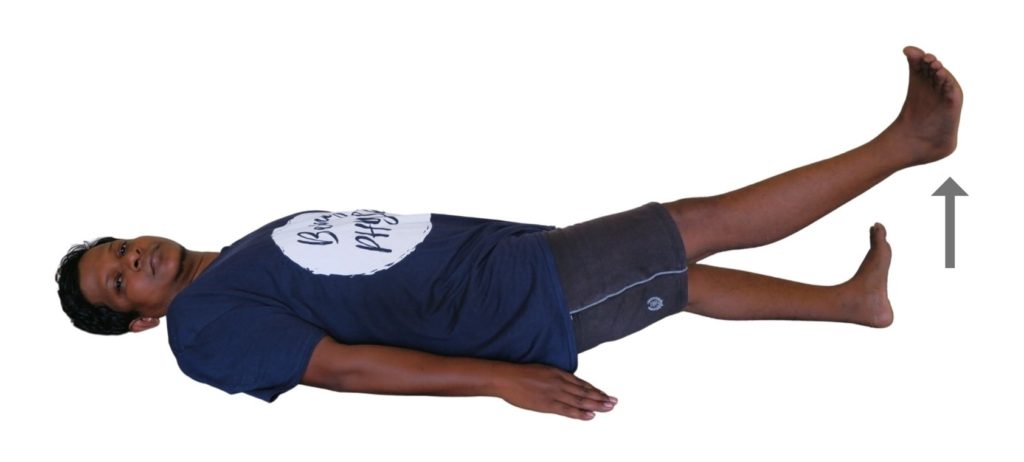
- To start with this exercise, lie straight on your back and keep your hands by your side.
- Lift one leg without bending the knee and raise it to an angle of about 30 degrees.
- Hold this position for 5 seconds, counting from 1 to 5, then slowly lower it.
- Repeat this process at least 10 times in one session.
#5 Straight leg raise in side-lying
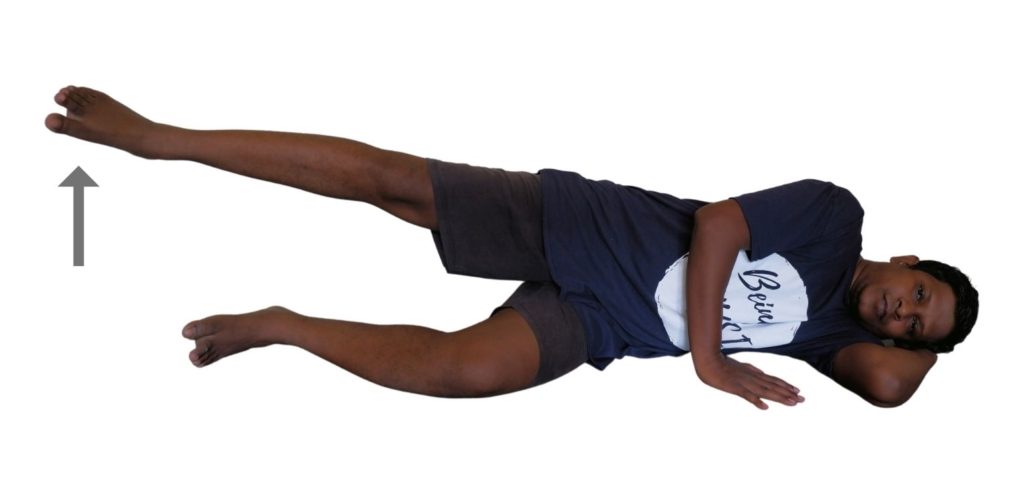
To strengthen the muscles on the outer side of the knee, we need to focus on the adductor muscles. We can use the straight leg raise exercise, but this time in a side-lying position.
- First, lie on your side with your right leg on top and your left leg on the bottom.
- Lift your right leg straight up, avoiding bending your knee joint. To make it more effective, keep the angle less than 30 degrees.
- Hold this position for five seconds, then slowly lower your leg.
- Repeat this exercise at least ten times in a single session.
Final words
Exercise can be an effective way to manage symptoms of bursitis in the knee. Working with a healthcare professional and incorporating targeted exercises into your routine can improve strength and flexibility in the affected area, reduce pain, and prevent future flare-ups.
If the conservative methods fail, then surgery is the only option. Surgeons perform a surgical excision and remove bursitis.
Dr Sunit Sanjay Ekka is a physiotherapist in practice for the last 15 years. He has done his BPT from one of the premium Central Government physiotherapy colleges, ie, SVNIRTAR. The patient is his best teacher and whatever he gets to learn he loves to share it on his Youtube channel and blog.
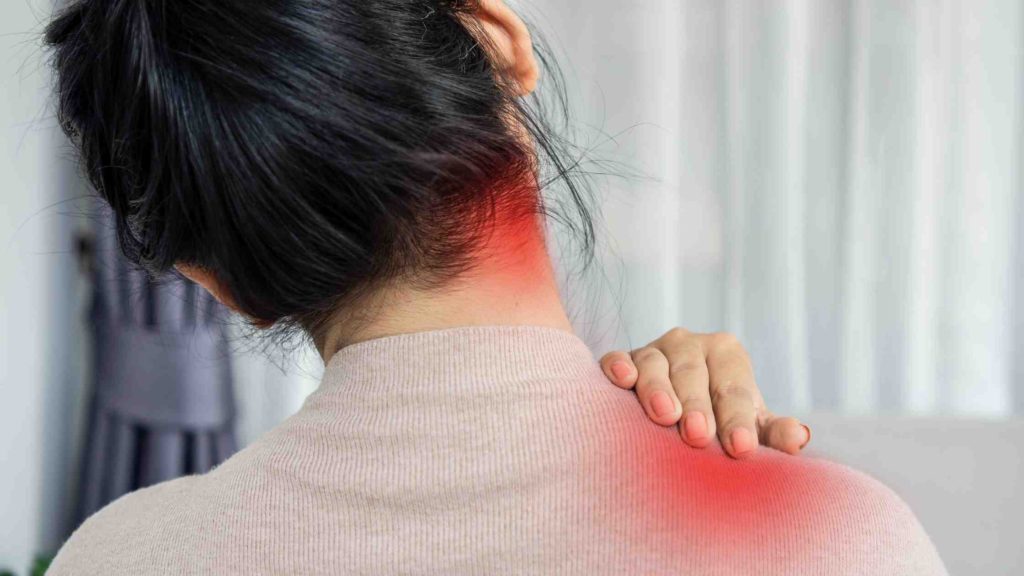


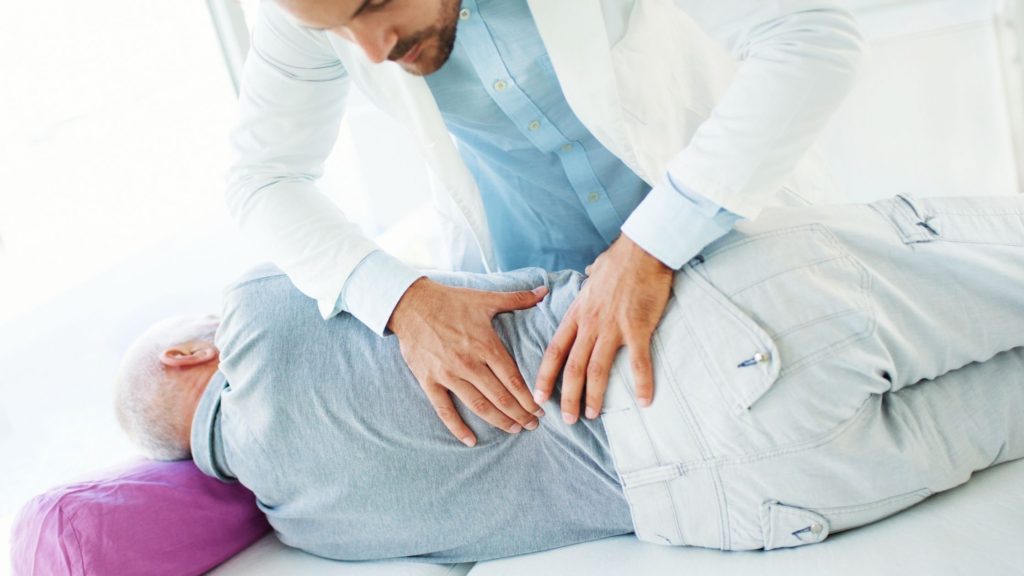

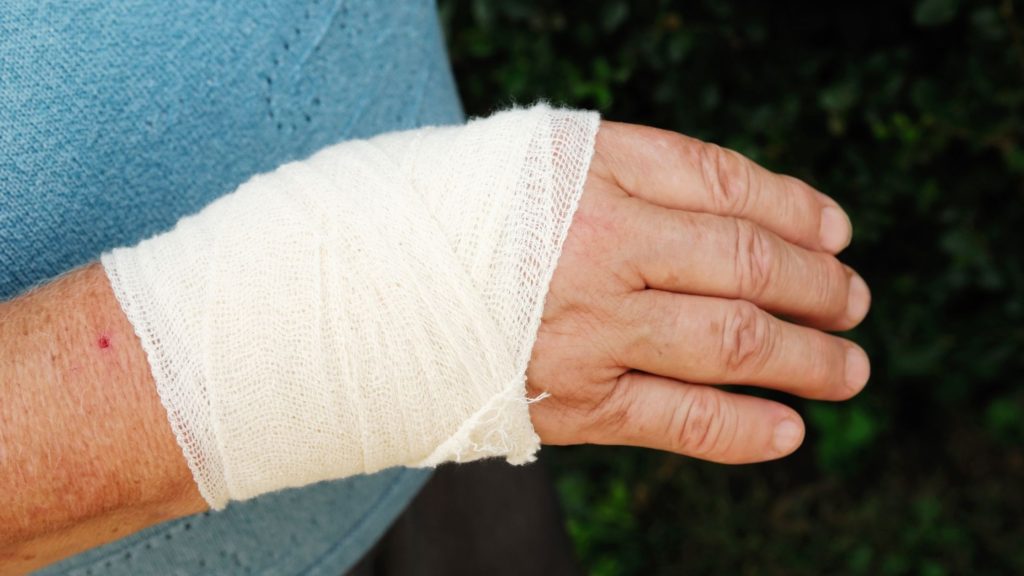
Hi, 6 days a week and once daily would be better for you
On the knee exercises, how often a week should I do these? Every day? 6 days and take a break? I don’t want to over do it but I also don’t want to under exercise. What ever is the best result.